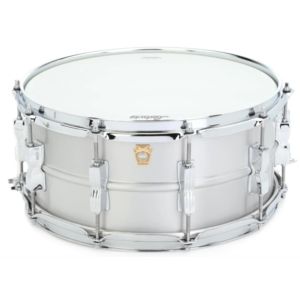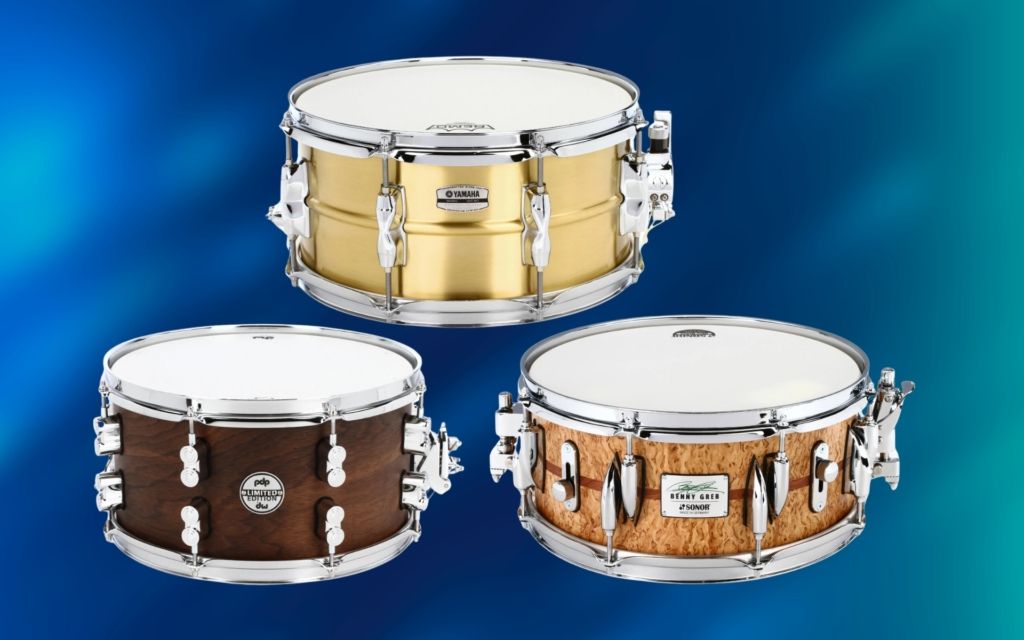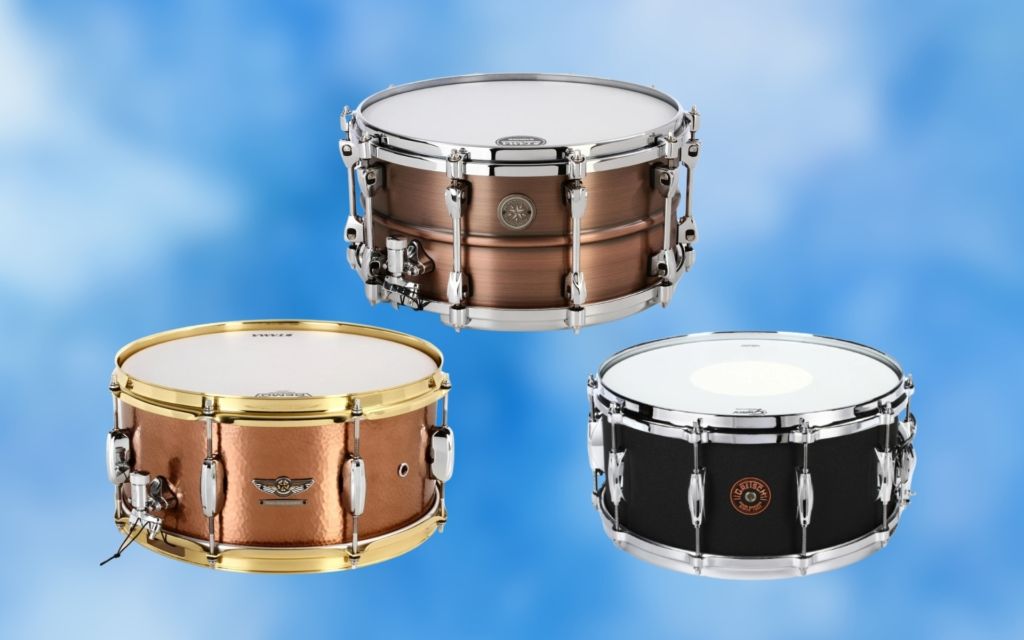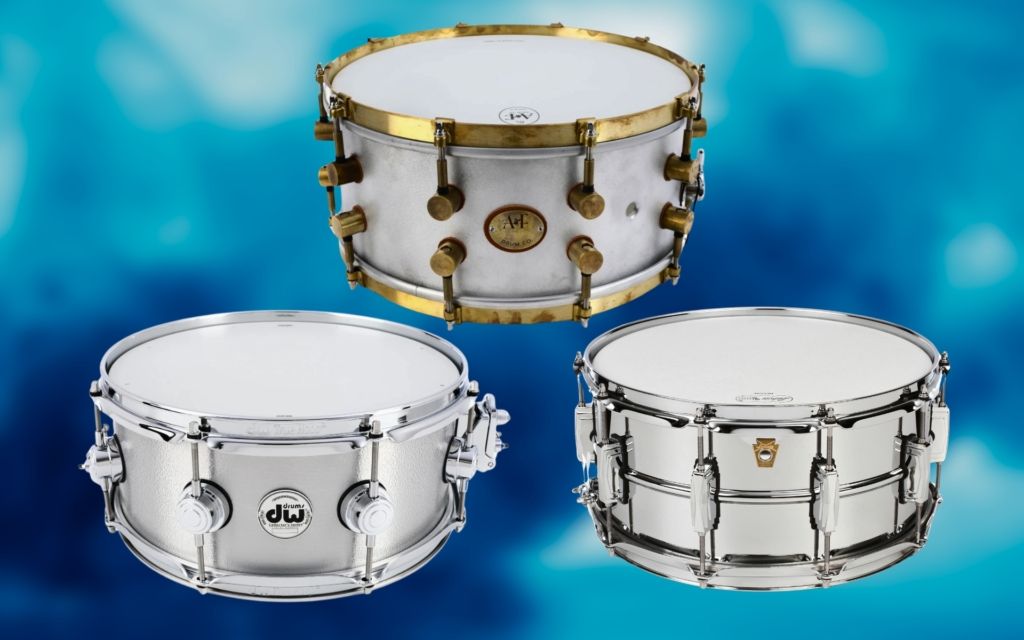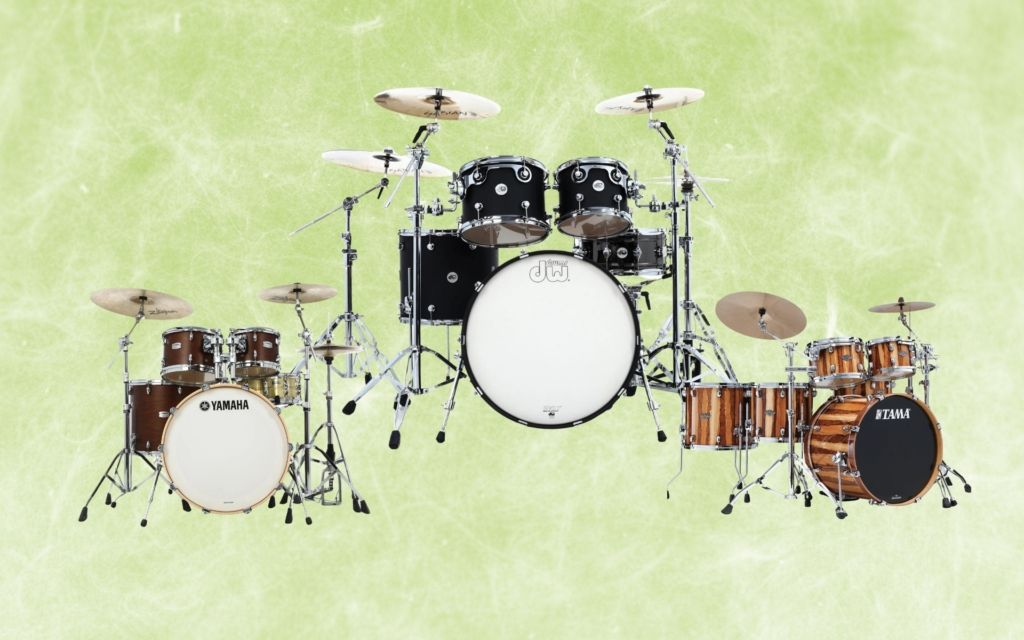Ludwig Acrolite Vs Supraphonic: Snare Comparison

Ludwig Acrolite Vs Supraphonic Detailed Comparison
Short On Time?
Tell me which is best now →The Ludwig Acrolite and Supraphonic are legendary snare drums that were first introduced in the 60s. Both share similar design qualities and have aluminum shells, so it can often be difficult to pick between them.
While playing both, I’ve found a few key differences. I’ll show you what those are, explain how they affect each snare, and then I’ll mention which kinds of drummers each snare will work well for.
Sound Quality
Both the Acrolite and Supraphonic snares are versatile and well loved thanks to their sonic characteristics. Since both snares have aluminum shells, they exhibit a crisp attack with some dry overtones.
However, I find that the Ludwig Acrolite is somewhat drier. As you strike it, the sound disappears fairly quickly. This allows you to play very articulate patterns while hearing each stroke clearly.
I also love how the Acrolite sounds in lower tunings. It makes it very easy to get the “fat” sound that is often needed in pop and rock music.
The Ludwig Supralite is a bit brighter and livelier. It also has slightly more resonance. So, when you hit rimshots, the tones ring for a bit longer. If you tune it really well, you get the impression that it’s a more musical snare drum.
The musical resonance and tight cracking tones are what make it such a popular snare drum.
Both the Acrolite and Supraphonic are regularly used in studio settings. Producers tend to like the Acrolite as it’s easy to mix with. The Supraphonic is more of a “do-it-all” option, thanks to its wide tuning range.
Shell Design
The Ludwig Acrolite is made from seamless spun aluminum, which is a fairly lightweight material.
The Ludwig Supraphonic is made from the same material, but I found the snare to feel quite a bit heavier. The big reason for this is that the Supraphonic is also chrome-plated.
This added thickness is one of the main reasons the Supraphonic has a fuller sound, while the Acrolite sounds thinner.
The Acrolite has Ludwig’s Twin lugs, while the Supraphonic has Imperial lugs. I find the Imperial lugs to look a bit better, but the Twin lugs are an iconic design feature of many Ludwig drums.
From what I can remember, the original Acrolite snare drums only had eight lugs. However, the modern versions of the snare drum have ten, bringing the quality much closer to the Supraphonic.
Since both snare drums have 10 lugs, they have very wide tuning ranges. However, I’d argue that the Supraphonic wins in that area, as it sounds amazing in every tuning. As I mentioned earlier, I think the Acrolite sounds best when tuned low.
Versatility
I’ve often heard of the Ludwig Supraphonic being one of the most versatile snare drums available. While that’s a pretty bold claim, I’m inclined to agree after playing it and putting it through a few different tunings.
I love how powerful it sounds when tuned low. You get that “fat” tone, but it still sounds resonant and vibrant. It then sounds like a pro studio snare drum when tuned much higher, giving you more crack and body.
I’d guess that it’s the chrome plating that rounds the tones out, making them more versatile.
While the Acrolite isn’t as versatile, it can still definitely be used in various settings as it has a very clear, articulate response. Again, I think the low tuning sounds the best, but I wouldn’t discount the snare for high tunings. You still get a fantastic crack with plenty of power behind each stroke.
The modern Ludwig Acro snare is available with a 14” x 6.5” shell, and the most popular Ludwig Supraphonic size is also 14” x 6.5”. There are also other sizes available, however, including a shallower 14” x 5” size.
I personally love the deeper shell as it has more body and ‘oomph’. I think it also allows for a wider tuning range.
Price
Pricing is where you’ll see the biggest difference between the two snare drums. The Ludwig Acrolite was originally designed as a budget snare for beginner drummers. That was how it was marketed when it first came out.
However, people who used it started to realize how good it was, and it wasn’t long until you saw pro drummers playing Acrolites everywhere. Since then, most people still consider it a worthy pro option.
It’s slightly cheaper than the Ludwig Supraphonic. So, while you don’t have as much versatility, you can still pay a bit less to get a really high-quality snare drum.
If you’re on a tight budget, I’d recommend sticking with the Acrolite. I don’t think the added tone and versatility of the Supraphonic is worth spending more than you’re happy to spend.
Finish
The final difference to mention is the finish of each snare drum. I’m mentioning this last, as it’s the least important thing to worry about. However, it may just affect your choice if you really value aesthetics.
The Ludwig Acrolite has a matte aluminum finish. It was originally called “Silver Sparkle” when the snare came out, but it’s gone through a few changes over the years. You can also find a few rare color options like black.
The Ludwig Supraphonic has a chrome-plated finish. It’s essentially just a metal snare drum with a metal appearance. I love snare drums like this, as they easily fit into any drum kit setup’s aesthetic.
Verdict
These are two amazing snare drums. While the Ludwig Acrolite was originally intended to be a budget pick, I think it easily compares with the Supraphonic.
If I were to suggest which snare to get, I’d recommend getting the Ludwig Supraphonic if you’re a drummer who plays multiple styles of music. If you regularly switch up your snare drum tuning, it’s a fantastic option.
The Acrolite is also a fantastic pick though. Especially for drummers who don’t want to spend as much. In my opinion, it’s also arguably the better option if you love low tuning. It just sounds so good in those lower frequencies.

